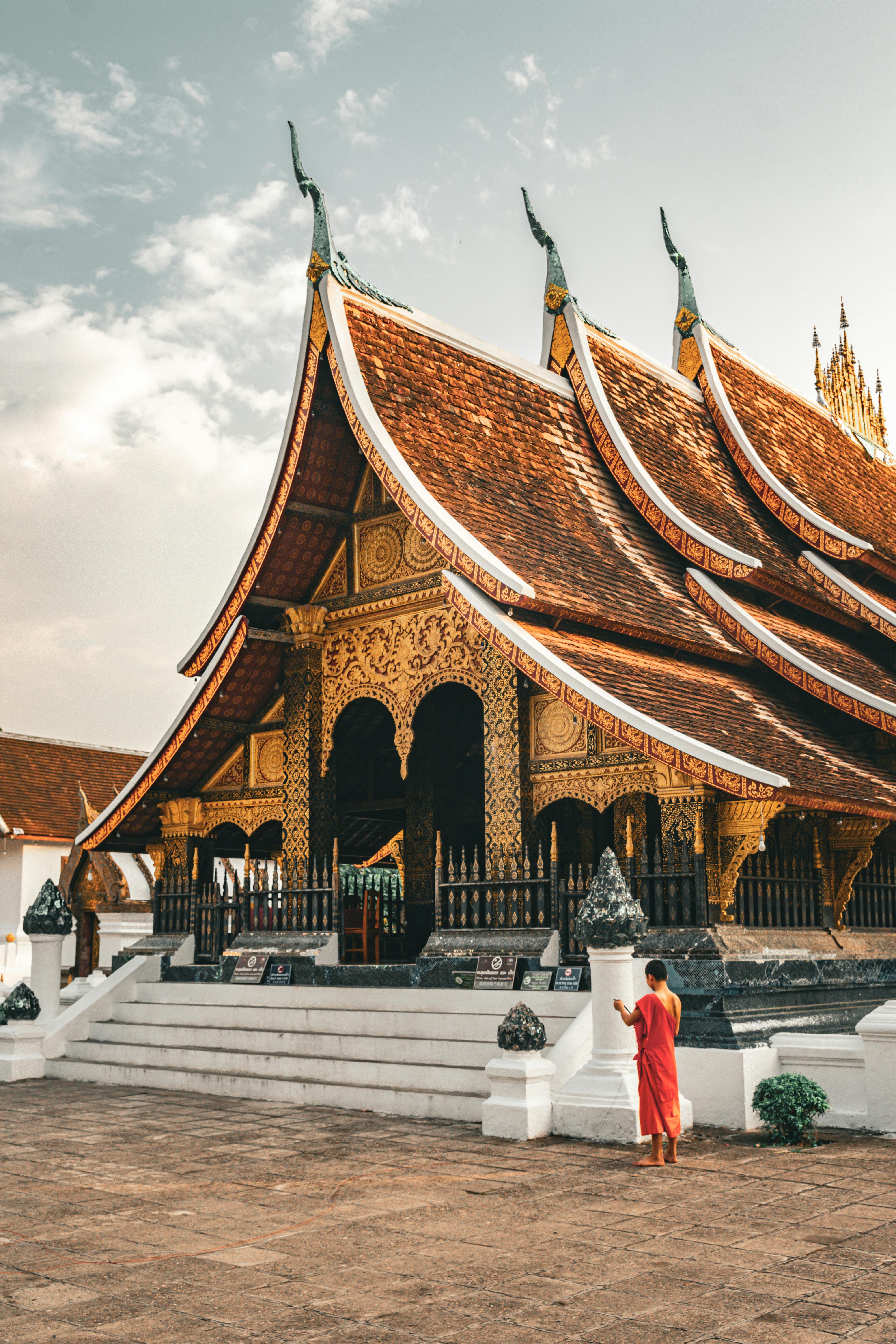Laos as a Country: Culture, Travel, and Local Perspective Guide
Why Laos? An Authentic Southeast Asian Journey Awaits
Most travelers don’t start their Southeast Asia adventure in Laos. That always struck me as odd. Yes, it’s landlocked, and admittedly, it isn’t as famous as Vietnam for food, or as bustling as Thailand for nightlife. But let me clarify right away: Laos is quietly, stubbornly, exquisitely itself. There’s a certain depth here that sneaks up on you, and I’ve found—over many years and more journeys than I can count—that Laos challenges almost everything you think you know about travel in this region. This guide is my honest attempt to map out why.
I’ll cover things I wish someone told me before my first slow boat journey from Huay Xai. I’ll also bring you the voices of locals, recent trends, and the quirky, soul-soothing surprises of Laotian culture. If you want platitudes, this isn’t it; if you want detail, context, and practical advice from someone who’s been there—read on.
Why Visit Laos? Busting the Myths
Ever find yourself scrolling social media and feeling like every “hidden gem” in Asia is on the verge of being overrun? Laos isn’t immune—its image as a tranquil, untouched outpost in the heart of the Mekong has cropped up all over Lonely Planet and Instagram lately.
But, stepping back a decade or so, it always amazed me how little most travelers genuinely knew about Laos. Even now, myths persist. For instance: Laos is “just for backpackers.” Or that it’s “only about Vang Vieng tubing.” Not remotely true. From my own experience, the magic of Laos isn’t just its serene landscapes or low costs; it’s the rare, radically welcoming spirit that threads through even the smallest villages.
“In Laos, it’s what you don’t find—the relentless commercialism or overbuilt resorts—that quietly remakes how you see travel.”
Let’s bust a few more myths before going further:
- Myth: Laos is “dangerous” or hard to navigate. Truth: It’s among the safest, friendliest places I’ve traveled—even solo.2
- Myth: There’s “nothing to do.” Truth: If you want giant malls, look elsewhere—but if you love ancient history, river journeys, craft villages, or coffee trails, you’ll be spoiled for choice.
- Myth: It’s just a “cheaper Thailand.” Truth: Laos runs at a different pace; it’s contemplative, community-focused, and rich in traditions that pre-date most national borders.
Laos at a Glance: Essential Facts
- Official Name: Lao People’s Democratic Republic (Lao PDR)
- Location: Landlocked; bordered by Thailand, Cambodia, Vietnam, China, and Myanmar
- Capital: Vientiane
- Population: ~7.4 million (2024 est.)
- Main Language: Lao, with dozens of minority languages
- Religion: Predominantly Theravada Buddhism
- Currency: Lao Kip (LAK)
- Time Zone: Indochina Time (ICT), UTC+7
Unique fact: Laos is the only landlocked country in Southeast Asia—yet the mighty Mekong makes you forget the ocean’s absence.
What I should have mentioned first: You’ll notice English is spoken sporadically—especially in Luang Prabang or Vang Vieng—but don’t expect everyone to understand you. French and Thai are common with older generations or across borders, though. This was disconcerting my first time, but it honestly led to some of my favorite travel stories: a lot of improvisation, hand gestures, and shared laughter.
Culture and Society: Beyond the Guidebook
Here’s where my perspective gets a little personal. Laos isn’t just Buddhist temples and saffron-robed monks, though you’ll see plenty of both. What never fails to bowl me over is the omnipresence of community—ritual, food, family, village tradition—woven into daily life. You’ll catch it everywhere: rice harvests along dusty highways, ornate wat ceremonies echoing before sunrise, or even in a simple, shared bowl of noodle soup. I vividly recall my first Baci ceremony in a small Luang Prabang alley, where elderly matriarchs tied cotton threads around my wrists. I didn’t understand every word, but the belonging was palpable. That’s Laos.
“Laotian culture operates like water: it flows quietly, shapes everything, but never boasts.”
The country’s history is a tapestry, to put it mildly. Laos was a crossroads of ancient kingdoms, then a French protectorate, then a fiercely bombed battleground during the Vietnam War (what locals call the “Secret War”). Its plains are still dotted with UXO—unexploded ordnance—a sobering legacy that local NGOs and international teams are working tirelessly to clear3. Yet, despite these scars, Laotians are remarkably optimistic. The culture is renowned for sabai-sabai: the laid-back “take it easy” attitude that spills into daily interactions.
Religious Traditions and Ethnic Diversity
While Theravada Buddhism dominates, over 49 ethnic groups call Laos home. Let that sink in. Even neighboring villages can vary dramatically in language, dress, and craft. From the lowland Lao Loum to the Khmu and Hmong of the northern highlands, diversity is both celebrated and quietly contested. In my time visiting textile cooperatives (yes, hand-loomed silk here is art), I learned how heritage skills pass down matrilineally—while access to modern education remains fraught, especially for rural girls.
- Openness to strangers is real, but not always immediate—respect shows through non-interference, gratitude, and patience.
- Most festivals follow the lunar Buddhist calendar; Boun Pi Mai (Lao New Year) in April is an unforgettable celebration of water, renewal, and endless laughter.
- Oral storytelling and traditional music (the haunting khene pipe) remain vital to rural identities4.
Top Destinations and Travel Routes
If you’ve read five other guides and all say “do Luang Prabang, Vang Vieng, and the Plain of Jars,” well, they aren’t wrong—but there’s much more. From my perspective, real discovery happens outside the “big three.” Here’s my honest, sometimes contrarian take:
| Destination | What Makes It Unique | Best For | Season |
|---|---|---|---|
| Luang Prabang | UNESCO World Heritage, serene riverside sunsets, French colonial architecture, night markets, Buddhist spirituality | First-timers, couples, cultural explorers | November–March |
| Vang Vieng | Karst mountains, adventure sports, revived “slow” village life, eco-lodges | Backpackers, adventure, budget travel | October–March |
| Plain of Jars | Mysterious megalithic sites, war history, rugged hills | History buffs, archaeologists, offbeat routes | Dry season (Nov–Feb) |
| Si Phan Don (4000 Islands) | Mekong archipelago, river dolphins, hammock time, bike trails, border crossings | Nature lovers, long-term backpackers | December–April |
| Bolaven Plateau | Waterfalls, coffee plantations, cool climate | Foodies, slow travelers, motorbike tours | Nov–Feb (harvest) |
Tip: The “classic” river journey from Huay Xai to Luang Prabang? I’ll be honest, it’s both more scenic and more comfortable than you expect. Bring a book, talk to locals, and embrace the two-day embrace of slowness. Buses can be bone-rattling, so don’t plan a tight itinerary. It’s very Laos to let plans drift, and often that’s when memories form.
Local Perspectives and Modern Realities
Something that’s changed dramatically since my early trips: connectivity. Wi-Fi is far more common, especially in cities, but rural coverage can be patchy at best. Laos joined ASEAN in 1997, and you definitely feel the push-pull between modernization and tradition. Even so, most villagers I’ve spoken with value tradition deeply—family roles, Buddhist rituals, and “face” (social harmony) still set the tone. Youth, though, are increasingly drawn to Thai pop culture, digital entrepreneurship, even overseas education when possible5.
“Older generations say, ‘We must move slowly, like the Mekong.’ But my friends want opportunity. It’s a good tension—keeps Laos real.”
- Rapid change is most visible in Vientiane and Luang Prabang—think new condos, investment from China and Vietnam, and (at last) frequent flight connections.
- Traditional village life persists: rice planting, communal festivals, almsgiving, and home-cooked meals remain bedrock experiences.
- Economic opportunity and rural-urban migration create both excitement and anxiety about culture loss—a reality openly debated in university circles.

Essential Travel Tips (Entry, Health, Money & Local Customs)
All right, let’s get really practical for a moment. Back when I first arrived, crossing from Chiang Khong (Thailand) to Huay Xai was an exercise in patience—visa forms, unhurried border officers, and the slowly dawning sense that speedy travel isn’t a thing in Laos. Actually, thinking about it now, the process has improved, but Laos retains its character: laid-back, occasionally bureaucratic, but ultimately gentle and forgiving.
- Visa: Most visitors can get a 30-day visa on arrival at airports or major border posts—but always double-check current rules before departure6.
- Money: ATMs are widespread in cities, but cash is essential in rural areas. Kip is the currency, but dollars and Thai baht are often accepted, especially for big-ticket items.
- Health: Malaria is a risk in some rural zones—consult travel clinics and (navigate the conflicting advice with patience) choose the vaccination and protection route that works for you. Medical facilities are basic; serious issues usually require evacuation to Thailand or Vietnam7.
- Transport: Don’t overestimate travel speeds. Riverboats are unforgettable, buses “adventurous,” and internal flights—currently running more frequently—can save days on some routes.
- Internet/mobile: Buy a local SIM at the border if you want phone data. Lao Telecom and Unitel have the best coverage, but still, expect dead zones.
- Etiquette: Dress conservatively in villages and temples. Never touch heads (including children’s), and avoid pointing feet. A gentle smile goes a very long way.
What About Safety and Scams?
Generally speaking, Laos is one of the safest spots in Asia—violent crime is almost unheard of. However, petty theft (especially in crowded markets) happens. My rule? Trust your gut, don’t flash valuables, and relax: you’re genuinely among some of the region’s kindest hosts8.
“Take time to learn a few Lao phrases—Sabai-dee! melts barriers quicker than any currency.”
Laos in the Global Context: Quick Comparisons
Now, how does Laos actually compare to its neighbors or to other “emerging” travel destinations? I wrestle with this question often, especially when coaching travelers who’ve racked up Thailand and Vietnam stamps but still hesitate on Laos.
| Country | Population (2024) | GDP per Capita (USD) | Global Peace Ranking (2024) |
|---|---|---|---|
| Laos | 7.4 million | 2,500 | 45 |
| Thailand | 71.7 million | 8,200 | 96 |
| Vietnam | 98.9 million | 4,150 | 41 |
| Cambodia | 17.1 million | 1,700 | 85 |
Why show these numbers? Because the temptation is to judge purely by GDP or development markers. Honestly, when you’re in Laos, those lines blur—material poverty does not equal spiritual poverty, and often the depth of community you feel here leaves a more lasting impression than hyper-modern cities ever could9.
- Laos has a higher Global Peace Index ranking than Thailand or Cambodia—a data point, but also an experiential truth.
- Urbanization is low, and Laos is still predominantly rural, with nearly 65% of the population living outside cities.
- Internet penetration now tops 45%, but younger travelers—especially those hoping for “digital nomad life”—should manage expectations accordingly10.
“Don’t try to make Laos fit Western checklists. The learning comes when you let go.”
Sustainable Travel and Responsible Tourism in Laos
Let me step back for a moment, because this is where I get genuinely passionate—and a little conflicted. Tourism can be double-edged. The charm of Laos relies on its traditions, quiet, and hospitality; but unchecked tourism risks exactly what makes Laos special. I’ve noticed (especially since 2020) that initiatives around “community-based tourism,” fair trade crafts, and local homestays have become far more than buzzwords—they’re changing lives. Example: in Nong Khiaw, North Laos, villagers manage their own trekking circuits, reinvesting profits in infrastructure and local education projects11.
- Opt for certified eco-lodges and community-run experiences (they’re everywhere, and your dollar stays local).
- Always ask before photographing people, especially monks and in small villages.
- Minimize single-use plastics—the Mekong is, after all, both lifeblood and fragile ecosystem.
- Respect rice-planting and harvest closures for trails or boat trips—locals depend on the land and the rhythms of nature.
Seasonal Travel Considerations
One of my biggest mistakes? Visiting during the peak of the wet season (June–September) expecting dry roads everywhere. Monsoon rains can cut off whole regions, especially north of Luang Namtha or on the Bolaven Plateau. This isn’t a “ruin your trip” warning, just a heads-up—it becomes part of your Laos story.
- Best weather: November to February (cool, dry, perfect for hiking and exploring)
- Festivals: Boun Pi Mai (Lao New Year) falls in April—expect water fights and city-wide celebrations.
- Wet season: June to September—lush, green, and dramatic, but plan for muddy routes.
Tip: Always check local forecasts with the Lao MET department before setting out12. Road closures or ferry disruptions are not rare during peak rains. When in doubt, ask your guesthouse host—they know best.
Bringing It Home: Why Laos Leaves a Mark
I have to say—with total honesty—no country has reshaped my view of “adventure” and “authenticity” more than Laos. Maybe it’s the way the country invites (even compels) travelers to slow down, unplug, and pay attention. Maybe it’s the quiet confidence of villages that don’t seem interested in outdoing anyone else. The more I consider it, the more convinced I am that Laos rewards the patient, the curious, and the open-hearted far beyond the guidebooks’ promises.
“Laos is not for those in a hurry. It’s for those who want to remember how to breathe.”
Have questions? Want to share your own Laos story, or get deeper planning advice? Leave a comment below—or reach out for future travel guides, updates, and personal suggestions.
References and Further Reading



